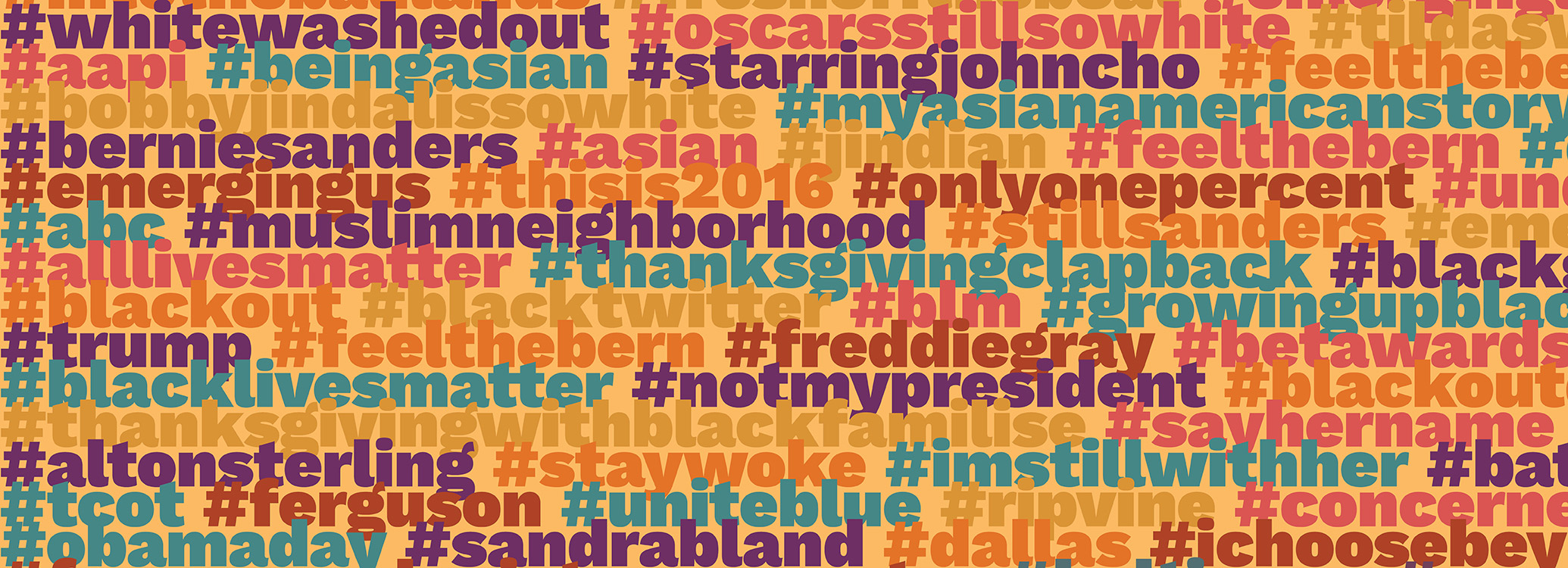
New report: How Black Twitter and other online communities interact with the media
Olivier Kamanda is Knight Foundation director for learning and impact.
In today’s seamless digital world, social media platforms like Twitter are playing an outsized role in connecting people around the news and information that matters to them. News gets digested and discussed in real-time. Hashtags glue the various threads of the conversation together. Anyone can chime in and build credibility by the quality of their posts.
Understanding this digital infrastructure, which works to drive news engagement, delivery and reach, is vital to building more informed, stronger communities. With this in mind, in 2017, Knight Foundation commissioned a study to understand how subcultures on social media, comprised of traditionally marginalized communities including Black Twitter, Feminist Twitter, and Asian-American Twitter, interact with reporters and the news. The goal was to create lessons for reporters on better covering and engaging with these communities, aligned with Knight’s journalism work that supports greater newsroom diversity.
Using a mix of computational analysis, qualitative review, and interviews, the researchers analyzed over 46 million tweets with community-related hashtags from 2015 to 2016. To date, this report is the largest review of Twitter conversations examining the relationship between media and these online sub-cultures.
With no operational definition for ‘online communities’, the researchers devised a framework for attributing hashtags (and their corresponding tweets) to each subculture. In this regard, the approach reflects the porous nature of the subculture conversations, where discussion threads often bleed across community lines.
Here’s some of what we found in the data:
Black Twitter is big.
Although each of Black Twitter, feminist Twitter, Asian-American Twitter are well-established, Black Twitter dwarfs the other two in terms of size. More than 36.7 million tweets matched one of Black Twitter’s hashtags, as compared to feminist Twitter’s 8 million and Asian-American Twitter’s 1.2 million. Black Twitter is the most mature of the subcultures, but they share many conversations and priorities. In fact, we can see evidence of intersectionality in the data. Among the three, Black Twitter and Feminist Twitter share the strongest connection in terms of overlapping hashtags (1,286,095 tweets/hashtags).
Community members make their own news.
Although Twitter’s platform naturally lends itself to sharing news, mainstream news as reported by journalists plays a surprising small role in these subculture conversations. Not only are journalists failing to engage with these subcultures (data showed 43,413 tweets by news organizations and journalists, representing 0.1 percent of all tweets), but community members are using Twitter to share issues of importance regardless of whether the traditional news media is covering those issues. Among the three subcultures, only 9.1 percent of tweets contained a link to a news story or referencing a news media Twitter account.
Distrust leads to disengagement.
In the qualitative interviews, one of the themes that rang clear was community distrust of traditional news media. Favorability analysis of the 23 major news outlets skews more negative than positive. At best, sentiment analysis of the communities’ tweets shows that “community members rarely express media trust or distrust explicitly on Twitter.” The report highlights that “over 90 percent of tweets contained no news criticism and over 95 percent contained no praise.” But these data illustrate the gulf between community members and traditional media, which has profound implications on the quality of journalism’s coverage of community issues. As Knight’s director of journalism, LaSharah Bunting notes, “While a diverse staff is important to improving the relationship with the audience and ensuring relevant coverage, newsrooms must also commit to regularly listening to and engaging with readers.”
Higher engagement does not equal approval.
In addition to favorability, the researchers looked at which news outlets were the most popular. The data showed that content from news outlets with low favorability scores was also among the most shared. BuzzFeed, The Washington Post, The New York Times, HuffPost and CNN—were among the top 10 most shared outlets across all three communities. Of these, only one – BuzzFeed – had a favorability score above zero. As outlined in the report, news outlets tracking engagement often equate shares with endorsement and use these numbers to measure audience reach. These numbers suggest that share counts do not translate to approval or trust, highlighting the need for deeper examination by news organizations.
This is just some of what we learned. The full report and can be found here.
As new organizations examine new and better ways to engage diverse audiences and understand changing community demands, this research provides an important starting point for further discussion and study.
On March 8 Knight Foundation will host a Twitter chat at noon E.T. to answer questions about the report and connect with people around ways to strengthen the relationship between journalists and these communities. And on March 26 Knight will host an event in New York in collaboration with Postlight; the event will be streamed live on Knight’s Twitter page starting 3 p.m. ET.
-
Journalism / Article
-
-
Information and Society / Report
Recent Content
-
Journalismarticle ·
-
Journalismarticle ·
-
Journalismarticle ·




